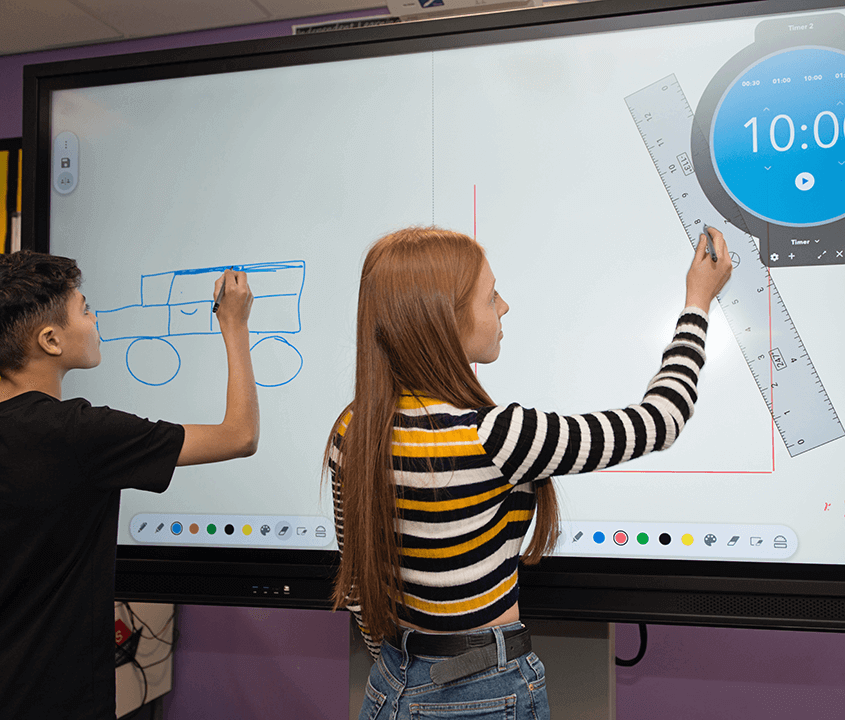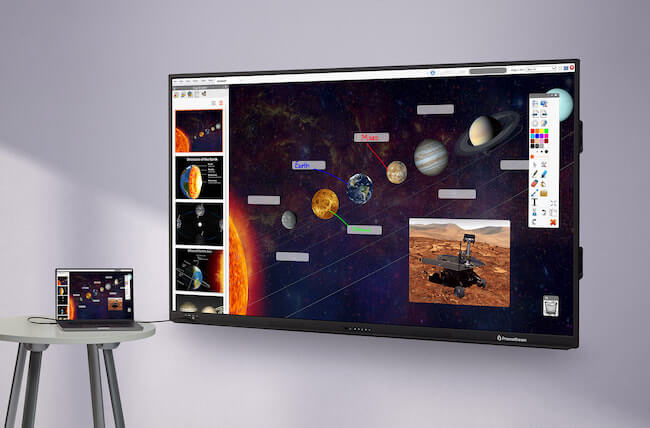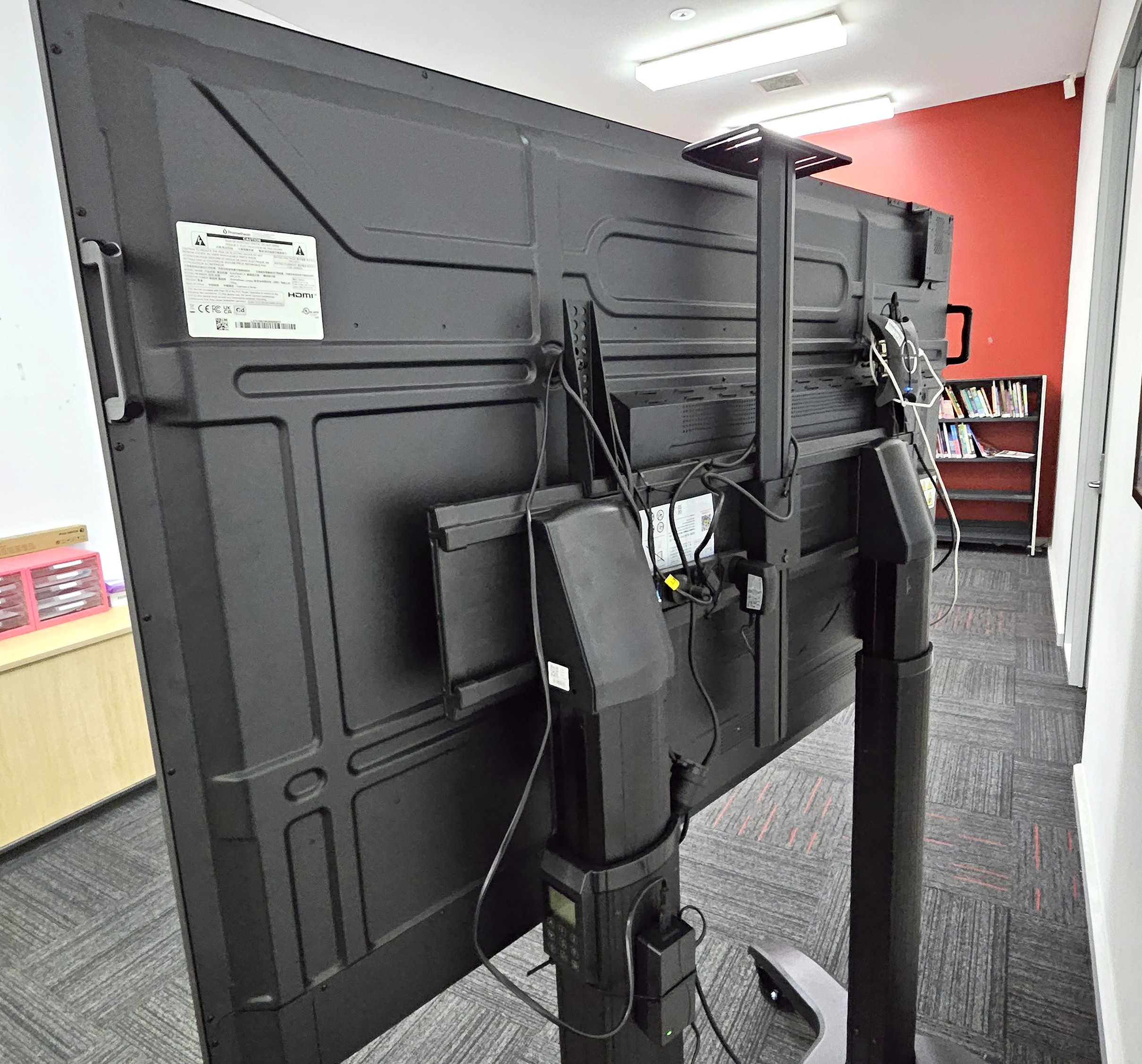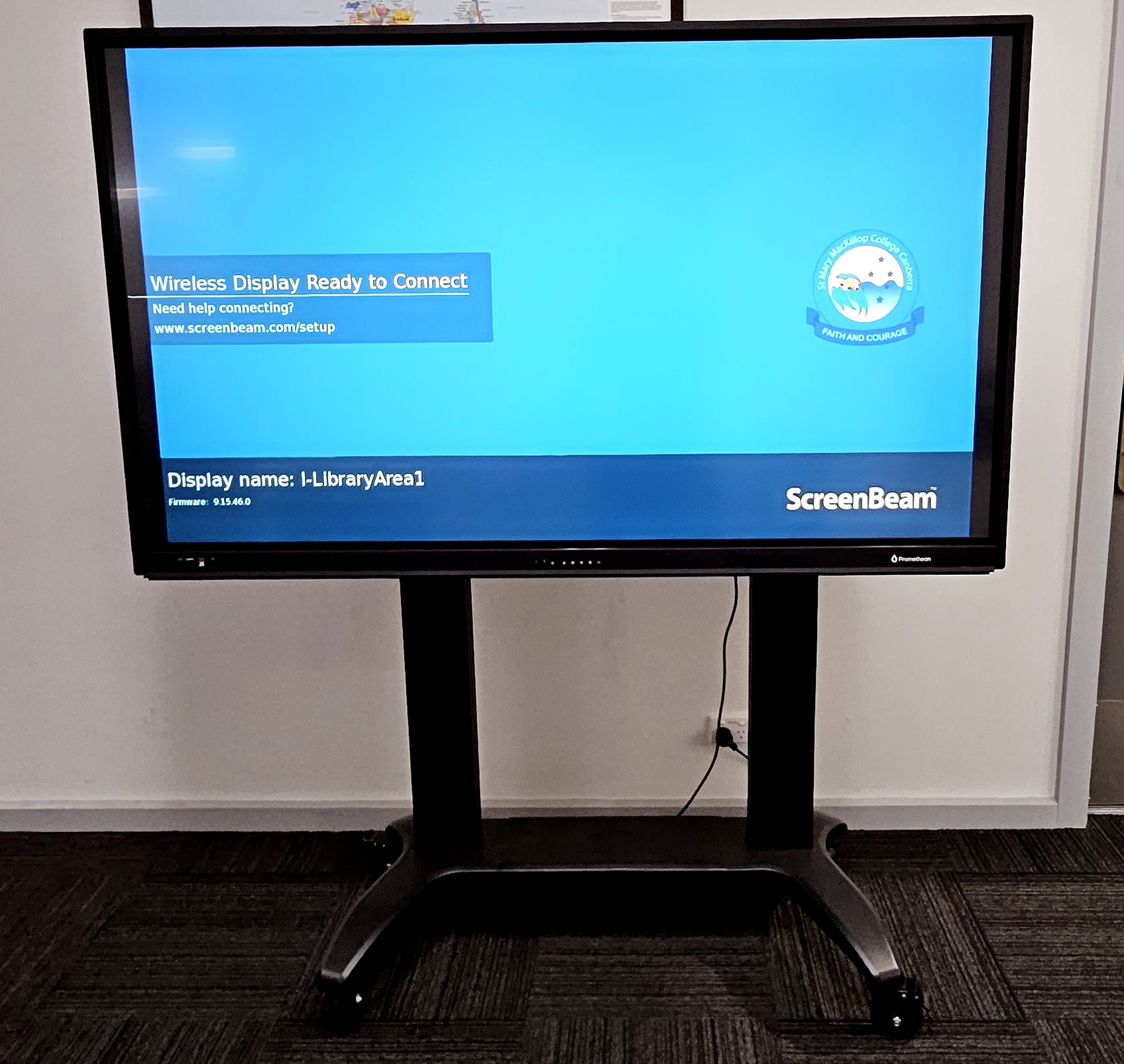Is it better to buy an interactive screen with or without smarts?
Background
I’ve been dealing with interactive screens in classrooms for several years now. When I started in schools, I inherited responsibility for a legacy of screens from various manufacturers. Some were still within support, but most were living on like a crazy naked man: unsupported and likely to attack. Some staff had invested in the associated software, allowing them to present lessons as the manufacturer intended, but when the software license expired, they would be left with a disappointing investment of time. Consequently, most staff relied on teaching from a connected laptop.
My first task when I started at my new school was to assess various systems, including the classroom AV situation. At St Mary MacKillop College, Canberra, there is a 50/50 mix of projectors and interactive screens. I started working on plans to transition the remaining projectors to screens, but I needed a classroom AV standard to drive this. After talking to teachers about their use, I needed to assess the market.

What I found was a growing number of manufacturers keen to get their devices into schools, including traditional screen-makers, like Promethean, Smart, CommBox, a range of known electronics manufacturers moving into the market, like LG, Samsung and Phillips, and quite a few Chinese brands I wasn’t familiar with. I also attended EduTech (a significant Australian commercial education technology conference) to see the offerings from these brands in real life.
I discovered each manufacturer attempting to differentiate themselves, not on their hardware, but through their software offerings. Each sales pitch highlighted the various Android-based tools you could while using their device. The walled gardens of the past seemed to be growing.

Teachers had told me they were not using the built-in interactive screen tools they had access to now and weren’t interested in using more than their laptops. For some teachers, I could imagine some of these tools could have use-cases some of the time, but I couldn’t help considering the support, training and maintenance needed to provide these tools, as well as the disappointment in teachers if it were to be taken away later. Some manufacturers have considered breaking down the walls slightly by allowing staff to log into Google Drive or OneDrive and to deliver their content from those cloud sources, but this also left me a bit concerned as it would need more connections, more accounts, and would create a possible data breach vector that would be hard to control if staff walked away while logged in. Teachers are entering class with a tool that has the smarts they need, so why try to replicate that on a device with another operating system?
Can it be simpler? Yes, it Can.
I started looking for devices without smarts. This is something I had achieved at a previous school, so I knew there were possibilities. Sending touches back to a connected laptop is still important as teachers like to write on a board like a whiteboard. I turned to Dell, who I had sourced not-smart touchscreens from before, but their AU$4,800 price for a 75″ screen was higher than most of the smart interactive screens available. I started speaking to the makers of the smart interactive screens to see if their devices could be modified or reconfigured to disable the smarts, but their solution still required access through the Android OS to connect a laptop, and that OS would run out of support well before the screen’s expected end of life. Fortunately, I stumbled upon a new model from Promethean that allowed you to purchase the screen and smarts separately, and the cost of the screen without smarts was very attractive at around AU$2,200.

I was a bit worried that this might be a lower-grade device with laggy touch and tinny speakers, but our testing showed the response to touch and pen input to be responsive and the sound sufficient to fill a classroom. One nice bonus is the USB-C port that allows a single-cable connection for video, sound and return touch, while charging the device. Another benefit is that the device turns on quickly, so you don’t have to wait for an OS to load.
We set about making this the basis of our new standard AV classroom setup.
Setting Things Up – Stands
One other costly aspect of classroom AV can be the installation. In my previous school, all screens were wall-mounted with a cupboard containing devices and a controller to allow you to switch sources. This Rolls-Royce solution suited the school, but a simpler solution is available. Movable stands are widely used, but it’s worth comparing to mounting. Putting an interactive screen on a mobile trolley means it can be set up by IT staff, without any need for electrical or network contractors.
| Trolley Pros | Trolley Cons |
|
|

Is Wireless Projection Worthwhile?
Wireless adapters give teachers the freedom they want to move around the classroom while presenting. It’s not perfect, but it can achieve what teachers want most of the time.

Using a wireless adapter has some advantages and disadvantages.
| Wireless Display Adapter Pros | Wireless Display Adapter Cons |
|
|
We’re using ScreenBeams and there are other wireless adapters available. I recommend wireless adapters that use the native screen mirroring potential of users’ laptops.
- I have found requiring software installation to use a wireless display adapter is a step too far for most users.
- The native wireless solution uses a direct radio connection rather than clogging up the network to communicate. Guests not on the WiFi can still use them.
Some effort is required to set up the global monitoring software that allows you to see the status of SceenBeams and change their configuration. Some network changes and testing went into getting that working at our school; Kudos to Corey and Roman for that work.
A Simpler Classroom AV Spec
Our classroom AV setup now consists of the following components, with rough prices, incl. GST (as at 20231110).
| Promethean LX | $2,200 |
| Moving Trolley (eg Gilkon), height adjustable (could be cheaper otherwise | $980 |
| ScreenBeam 960 | $600 |
| Extension cord, power board, cable ties | $30 |
| Total | $3,810 |